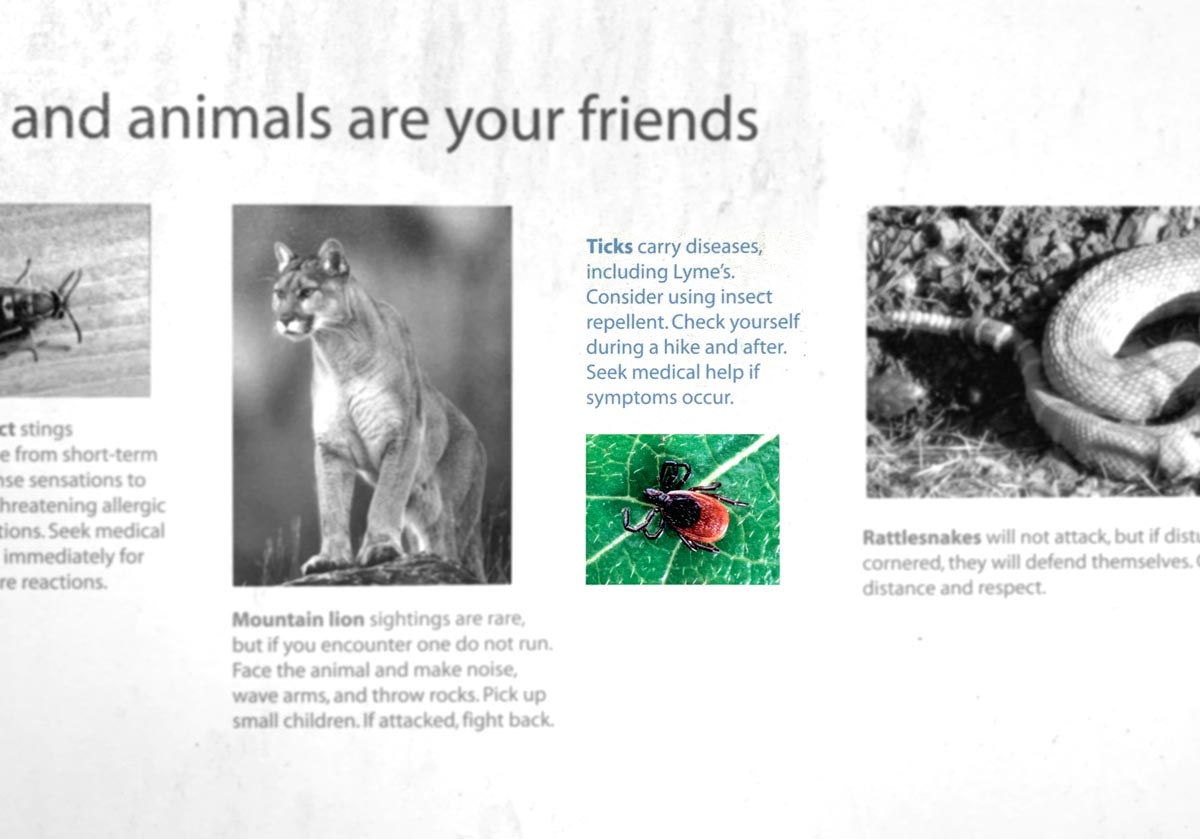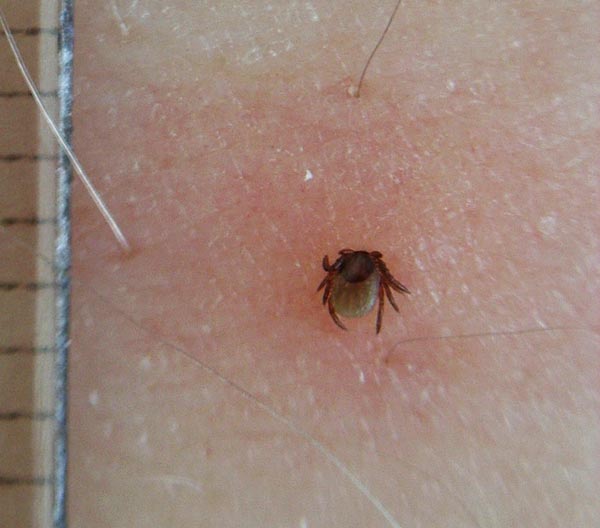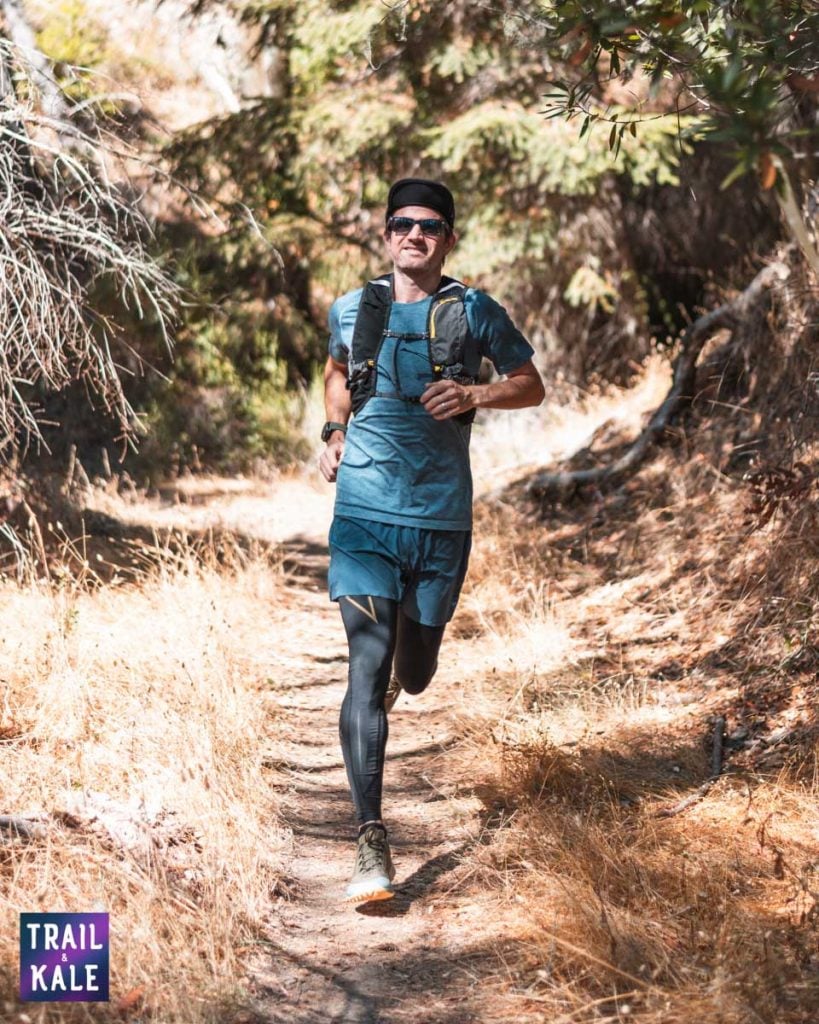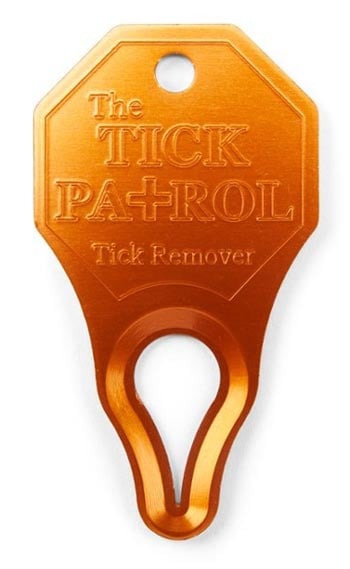Whether you are hiking or trail running in the woods or near grasses, in certain parts of the world the chances of picking up a tick on your body is very high. So, why should you be worried about how to prevent ticks on humans, let alone on your dog? And why are there warnings on your local trailhead signs saying things like “Warning, ticks may be found in this area”?
This article should answer all your questions relating to ticks and why hikers, what diseases and infections can result from tick bites, and what backpackers and trail runners should know how to do everything possible to avoid ticks while hiking, plus – how to get rid of ticks if you get bitten.
So what are ticks and tick bites?
Ticks are small bugs that suck your blood! They are technically small arachnids (not insects). Ticks vary in size from a fraction of an inch to around 1/4 of an inch (0.8mm to 6mm). The very smallest, juvenile ticks are very hard to see but you can still make out their body and legs if you happen to to get a tick on your body.
There are different types of tick depending on where in the world you are hiking, backpacking or running, but for the avoidance of doubt the best way to prevent picking up ticks and getting bitten is to avoid putting yourself in the situation where any tick may latch on to you, regardless of whether they are the type that is known for transmitting serious diseases or not (better safe than sorry, eh?).
When ready to feed, ticks wait on long grasses for a human or animal to brush past, so that they can latch onto them. As hikers, backpackers and trail runners we are particularly at risk of picking up ticks and getting bitten. If you hike or trail run with your dog then there is the additional risk of your dog picking up ticks, especially if they are off-leash and brushing past grasses or through undergrowth where ticks may live.
A particularly disturbing fact about ticks is that they prefer warm, moist areas of peoples’ bodies so they’re likely to then migrate to your armpits, groin, or hair. When they’re in a desirable spot, they’ll bite into your skin and begin drawing blood. When a tick has bitten you and begun sucking your blood (or your dog’s blood) then it can swell up to almost 1/2 an inch (1 cm)!
What color are ticks?
Ticks can range in color from brown or reddish brown to black. Most of the ticks that are common where we currently live are definitely more red than brown in color, when you see them in the sunlight.

Why should you avoid getting bitten by a tick?
The major reason why you people should do everything practical to prevent tick bites in the first place is that these tiny blood-sucking bugs don’t just suck your blood – it’s that ticks can transmit some serious diseases which can have serious consequences, be quite debilitating and take a long time, sometimes years, to recover from.
Perhaps the biggest risk of tick bites to humans is contracting Lyme Disease, which is transmitted by certain ticks like the Blacklegged Tick (also know as the Deer Tick).
Lyme Disease is an infection that can lead to some serious symptoms like a nasty rash, joint pain and swelling, and even neurological problems if not treated properly in a timely manner.
If you get treatment for Lyme Disease early, antibiotics are usually enough to recover. However, the big risk of picking up Lyme Disease from a deer tick bite is that if you don’t get treatment quickly enough, the disease can develop to the point where you can get permanent nervous system damage (source: US Center for Disease Control).
What does a tick look like?
Ticks look a little like spiders (they are arachnids, too) and have eight legs, a small head and a round or oblong body. To give you a better idea of what a tick looks like and what a tick bite looks like, this is what a tick looks like on a human once they have latched on to their skin?
A tick bites and attaches itself to a human or animal’s body in the same way – by burrowing its head beneath your skin. You can see that in the picture of a tick on the person below. You can’t actually see the tick’s head because it’s buried. See, gross huh?
This is the reason why you can’t just flick a tick off your body like you could with a spider or another different type of bug or insect. Below I explain why it is VERY IMPORTANT NOT TO pull a tick off your body.

What other infections and diseases can ticks transmit?
I don’t want to worry you too much and put you off hiking or trail running, but sufficed to say that ticks are capable of transmitting a whole load of other diseases in addition to Lyme Disease.
Different ticks can transmit different diseases, which the curious people among you can read more about here, but if you don’t want to get too wrapped up in it let’s just focus on how to prevent ticks on people and dogs in the first place 🙂
How do you prevent ticks on humans when trail running or hiking?
If you take the right precautions and wear appropriate hiking and trail running clothes then it’s pretty easy to prevent picking up ticks and getting bitten. Here are the 4 top tips for how to prevent ticks on humans. Our first three tips natural ways to prevent ticks. Option 4 is the more chemical-based solution. For good measure I suggest doing all four to minimize your chances of a tick bite:
Be cautious when hiking or running in woodlands and grassy areas
This is especially applicable when hiking in the Spring to Fall months. Avoid going off-trail into long grasses and brushing up against undergrowth and grass when you walk.
Wear long hiking pants or running tights
If it’s not too hot this is the best way to protect your legs and groin from ticks. Compression tights are also a great choice as they fit close to your body and don’t allow ticks to get between the tights and your skin, and they have thin, breathable material so you don’t get too hot when wearing them.
Otherwise opt to wear some compression shorts like SAXX Underwear underneath your running shorts, as ticks like to make their way to hairy areas before biting (but not always). Wearing long socks is also a good idea. If your body is covered then it is much harder for a tick to make its way onto your skin.
Check your skin every couple of hours
If you do this simple check and you notice one before it bites then you can just brush it off as it seems they take a while to decide where to bite.
If you are running or hiking with friends and family, make a point of checking each other, especially on areas they can’t easily inspect themselves, like the backs of their legs and ankles.
If you are hiking or running with a dog, then check them regularly, too. I’ve found and brushed off many ticks from our adventure dog Kepler.
Unfortunately, even if your dog is on a 6ft leash, they are hairier and are more likely to brush through or past grasses where ticks hang out, waiting to bite them.
Wear a good insect repellent
This is not a natural way to avoid ticks however I recommend using UltraThon Insect Repellent which is 34% DEET (the most effective insect repellent available) and provides up to 12-hours of protection; it also resists rain, water splashes, and perspiration.
Even if you are wearing insect repellent, this is not a substitute for the preventative steps above – I do all of these things together to avoid ticks while hiking and running!
How to get rid of ticks on humans
Unlike most other bugs that bite, ticks typically remain attached to your body after they bite you. If one does bite you, you’ll likely realize at a later date after it has grown from feeding.
After a period of up to 10 days of drawing blood from your body, an engorged tick can detach itself and fall off but there’s no need to wait for it to get to that – and it’s important that you remove any ticks you find on your body as soon as possible to minimize your chances of picking up a disease that they may be capable of transmitting to you.
Here are the best steps to take to get rid of ticks from your body:
Have a shower and inspect your body all over for ticks and tick bites
Your first step for tick removal should be to shower soon after hiking or running on wooded or long grass trails where ticks are known to be in the area.
Showering within two hours of coming indoors can reduce your risk of getting Lyme Disease and may be effective in reducing the risk of other tickborne diseases too.
Showering may help wash off unattached ticks and it is a good opportunity to do a tick check – everywhere – and I mean, everywhere.
How to get rid of a tick bite if you discover one: Why you should NOT pull a tick off your body
If you try to pull a tick off your body without the right tool then you are likely to break its head off and it will remain stuck under your skin! No, this is not a horror movie, just a fact.
Even if you do remove the whole tick by pulling, you can squeeze its abdomen in the process (which increases your risk of infection, as the tick may regurgitate whatever it’s eaten from you/other animals and people – yuk!).
If you do notice that a tick has bitten you and it has latched on tight then you’ll need a good tick removal tool to detach the tick safely without its head breaking off.
A proper tool is much easier and safer to use than tweezers, I know this from personal experience after discovering multiple tick bites in various places on my body after an overnight survival course in the Scottish Highlands in my pre-hiking and trail running days (before I knew better!). I spent the weekend hiking, camping and sleeping in the woods and so it’s no surprise that I had at least 10 ticks of different sizes biting me everywhere from my ankles to my belly button.
Use the instructions specific to your tool, which should typically involve you grasping the tick as close to your skin as possible, between its head (which will be embedded in your skin) and abdomen, and pulling slowly until the tick releases its bite and comes away from your skin. Then you can dispose of it safely and clean the bite area thoroughly afterwards.
Hopefully, this article has answered all the questions you may have had about ticks, tick bites and how to prevent ticks on humans while hiking and trail running.
Please, don’t let ticks put you off enjoying the trails because they really are very easy to prevent while hiking and running in wooded areas and trail sections with long grass. At the same time, it’s worth every trail user being aware of them, for your own safety and peace of mind.







Excellent article even for those of us too old or unfit to do trail running !
Thanks Dennis,
Hope it helps you keep those ticks away! Great shed work by the way, it looks amazing!
Alastair